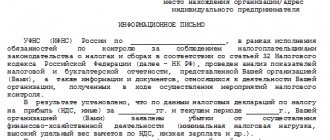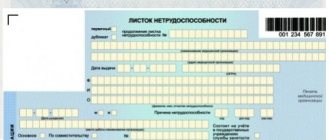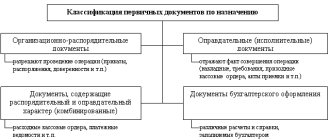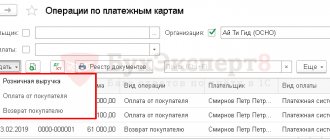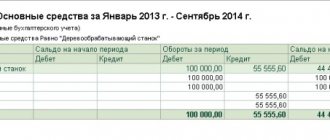- What to check for VAT
- Completeness and correctness of primary input with VAT
- Settlements with counterparties
- Reconciliation of VAT accounting data through 1C: Reconciliation
- Checking the VAT rate for the transition period 2018-2018
- Reposting documents for a period and setting a date for prohibiting editing
- Execution of Regular VAT operations
- Analysis of the state of tax accounting for VAT
- Express check of the Purchase Book and Sales Book
- Formation and verification of the VAT Declaration
- Checking the Purchase Book and Sales Book reports
- Checking VAT accounting data and confirming the amount of tax payable to the budget
- Completeness of accrual (payment) of VAT sanctions
What to check for VAT
What to check for VAT
What to check:
- completeness and correctness of input of primary VAT,
- settlements with counterparties,
- reconciliation of VAT accounting data with buyers and suppliers - 1C: Reconciliation,
- checking the VAT rate for the transition period 2018-2019,
- re-processing of documents for the period,
- setting a ban date for changing data,
- performing Regular VAT operations,
- Analysis of the state of tax accounting for VAT,
- Express check of the Purchase Book and Sales Book,
- generation and verification of VAT returns,
- checking the Purchase Book and Sales Book reports,
- checking VAT accounting data and confirming the amount of tax to be paid to the budget,
- completeness of accrual (payment) of VAT sanctions.
Pros and cons of working without VAT
Value added tax is a huge layer of work for an accountant and business manager. You need to issue invoices, keep a book of purchases and sales, transfer taxes and fill out declarations every quarter.
If you receive an exemption from VAT, accounting immediately becomes easier, and you will not have to charge tax on the cost of goods and services and pay it to the state. Accordingly, the final cost of goods and services may be lower and more attractive to buyers.
But at the same time, VAT non-payers cannot take it as a deduction , that is, what they themselves paid to suppliers when purchasing goods and services.
In addition, and this is the most significant disadvantage of working without VAT, OSNO contractors are reluctant to work with non-payers of this tax. If your potential buyer is an OSNO company that pays value added tax, it will be difficult for you to sell him goods or services without VAT. He will prefer to buy from your competitor with VAT, because he will issue an invoice with tax, on which the buyer can apply a deduction and reduce his tax payable.
In order to compete with such a supplier and offer an equivalent price, you will have to make a discount on the amount of VAT when selling, and this is no longer profitable for you.
Thus, working without VAT is beneficial only if your customers are also non-payers, that is, either individuals or organizations and entrepreneurs in special regimes.
We generate and send OSNO reporting for you from 1,666 rubles per month
Submit your application
Completeness and correctness of primary input with VAT
Completeness and correctness of input of primary VAT:
- Receipt to the current account (at the cash desk)
=> correct VAT rate, invoices for advances received from customers have been generated: Bank and cash desk – Registration of invoices – Invoices for advance payments.
=> correct VAT rate, invoices for advances issued to suppliers are registered:
- Debiting from the current account – Create based on – Invoice received.
=> correct VAT rate, invoices received are registered.
=> correct VAT rate, invoices issued:
- Journals Receipts (acts, invoices) and Sales (acts, invoices) - registers of documents and status of invoices (Posted, Not posted , Not required, Absent ) => sort by status;
Paper VAT
Any business strives to pay less and get more, and this is absolutely normal. Considering this feature of business, any opportunity to receive a tax discount from the state looks very attractive to entrepreneurs. VAT deduction is a tax benefit allowed by law, but some companies, in pursuit of profit, sometimes abuse their right and enter into transactions just for the sake of it. According to Article 171 of the Tax Code of the Russian Federation, a business can reduce the VAT tax from suppliers. To do this, the company must submit a VAT return with books of purchases and sales. As soon as these documents are verified by the tax authorities, the company receives a legal VAT deduction. But there is another situation when a business “purchases” something in pursuit of two goals: to reduce VAT and pay less to the budget. It is this kind of VAT that is called “paper”, since in reality it exists only on paper. The business of selling “paper” VAT is structured something like this: client companies are offered work through a chain of fly-by-night companies, they think through and come up with transactions that are formalized on paper. Everything looks realistic: one company supplied the brick, another bought it, here is the invoice, here is the contract. Accounting is an extremely important and mandatory process in our country for all legal entities. In order for accounting to be true and accurate, each accounting transaction is supported by documentation. If any document is lost or missing, serious problems and difficulties may arise, not only for accounting specialists, but also for the entire organization or enterprise. If, for example, invoices are lost, then restoring them can take a huge amount of time and cause many difficulties. To solve this problem, it is recommended to purchase an invoice by contacting a large specialized company that produces such documentation. The company has been working in this direction for a long time, so there is absolutely no doubt about its professional and competent approach to work. Here you can be offered different types of documents, including reporting ones, and all of them are prepared in accordance with the requirements and standards existing in this matter on the date of issue.
Settlements with counterparties
Settlements with counterparties:
- Reports – Standard reports – Analysis of sub-accounts
–
Counterparties
(sub-account Counterparties, Agreements, Documents of settlements with counterparties) => there is no detailed balance for: Accounting accounts (60, 62, 76), - Treaties,
- Documents of settlements with counterparties.
- Sales (Purchases) – Settlements with counterparties – Settlements reconciliation statements
– Settlement accounts => separate statements for buyers of accounts. 62, suppliers of accounts. 60 and other calculations. 76.
What are closing documents
Closing documents are documents that confirm the fact of completion of work, transfer of goods, provision of services and the absence of claims against each other of the parties to the contract. Based on these documents, goods and materials are received in accounting, services are taken into account, and the supplier determines revenue and income from sales.
In accounting, any business transaction must be documented and supported. Only on the basis of completed documents can you prove to the tax authorities that the tax has been calculated correctly.
For accounting, closing documents from individual entrepreneurs are required to confirm expenses, accept them as expenses that reduce income tax, and also to accept VAT on goods received and capitalized services. In the absence of documents, the tax office can recalculate the tax, charge penalties and fines, for example, for gross violations of accounting, failure to provide documents during an audit, underestimation of the taxable base, etc.
If you do not have documents confirming the completion of work, services or the transfer of goods to the buyer, that is, there is no invoice signed and executed on his part or an act of provision of services (performance of work), then dishonest people can take advantage of this and recover the entire amount from you through arbitration prepayments, contractual penalties and reimbursement of legal expenses. You will not be able to prove that you fulfilled your obligations in good faith.
We recommend reading: Taxes and contributions of individual entrepreneurs: types, terms and amounts of payments to the tax office.
Reconciliation of VAT accounting data through 1C: Reconciliation
Reconciliation of VAT accounting data with buyers and suppliers:
- Sales (Purchases) – Settlements with counterparties – Reconciliation of VAT accounting data.
Find out more What is the 1C:Sverka service and how to work with it
If the counterparty is duplicated in the 1C database, the message “An error was detected while loading supplier registers” will appear.
If the counterparty is duplicated (TIN/KPP) in the 1C database, then the message “An error was detected when loading supplier registers” will appear.
How to fix:
- open a letter with a file in email and save it to a new folder;
- Downloaded
tab –
More
(top right) –
Download from file
– select a file previously saved from email; - Click Load registry
.
Perfect option
– checking the
Contractors for duplicates
and deleting them.
VAT adjustment
An updated VAT return must be submitted when errors are identified that lead to an understatement of the tax or an overestimation of its amount accrued for reimbursement. Filing an updated VAT return in other cases is the right of the taxpayer, and not his obligation. We'll tell you how to make and submit a clarification. Submitting an updated or corrective VAT return to the Federal Tax Service allows the taxpayer to correct errors made in the previously submitted version of this document. If an understatement of the accrued tax amount is detected, filing an updated VAT return is mandatory (Clause 1, Article 81 of the Tax Code of the Russian Federation). The legislation does not oblige the VAT return to be adjusted, in which the tax amount was overestimated, but the taxpayer is interested in it himself. The tax inspectorate, when conducting a desk audit initiated due to the filing of an updated VAT return that reduces the amount of tax payable, has the right to request an explanation from the taxpayer (clause 3 of Article 88 of the Tax Code of the Russian Federation). The explanations (or calculation) must contain the justification for the changes made to the updated VAT return, and the taxpayer must provide them within 5 days after receiving such a request.
Express check of the Purchase Book and Sales Book
Express check of the Purchase Book and Sales Book:
- Reports – Accounting analysis – Express check
– Setup: Maintaining a sales book for value added tax, - Maintaining a book of purchases for value added tax.
Not only errors
, but also
warnings
.
Accounting for input VAT
Organizations and individual entrepreneurs have the right to make the tax payable lower by reducing it by input VAT. This means that when purchasing, for example, goods that are used in the main activity, subject to value added tax, VAT, which is included in the price by the supplier, reduces the tax base. Also included in deductions are the amounts of taxes previously paid from prepayment from the buyer,
To receive a VAT deduction, purchased goods and materials (services, etc.) must be accepted for accounting, have supporting documents (invoice) and be used in activities with the main taxation system, which involves paying VAT.
Input VAT is reflected in the debit and accounts:
- Debit 19 Credit 60 – reflection of VAT upon purchase
- Debit 68 VAT Credit 19 – VAT deductible.
Checking VAT accounting data and confirming the amount of tax payable to the budget
Checking VAT accounting data and confirming the amount of tax payable to the budget:
- Reports – Standard reports – balance sheet broken down
by Types of payments to the budget, - Reports – Standard reports – Account analysis
with grouping by subaccounts.
Check that the balance on account 68.02 (68.32, 68.42, 68.52) coincides with the amount of tax payable in the VAT return and the turnover on the accounts coincides with the Purchase Book and the Sales Book.
Clause 8. VAT from sites on cash and convey
These guys are involved in banking. They know how to turn non-cash into cash. But the intricacies of the tax service and the structure of the VAT ASC are not known to them. They also do not have the required capacity to close the VAT. They have working offices, with accounts, and there are few of them. And to work out their volumes, hundreds of offices are needed. Therefore, high-quality VAT can only be obtained from specialists who are exclusively engaged in the provision of VAT. VAT and cash/convo are two completely different activities.
In the vast majority of cases, cashiers themselves purchase VAT services on the side. At the same time, they choose the most budget-friendly options: cobble together from disused shops with lost directors, a block of 115, 550 on the list, etc. Because of this, their clients are then charged full additional charges for the quarter. Cashiers are also extremely reluctant to replace or reissue digital signatures, simply due to the unavailability of directors.
For most of them, VAT is just extra hemorrhoids. Their primary task is to produce a cache. What happens next does not bother them.
The saddest thing is when non-professionals, after the meeting, give several clarifications in a row on crooked circuits. After multiple replacements and chain failures within a short time, customers will experience many sorrows. And the commission.
Completeness of accrual (payment) of VAT sanctions
Completeness of accrual (payment) of VAT sanctions:
- Transactions – Accounting – Transactions entered manually – Create – Transaction – Dt 91.02 Kt 68.02.
- line 2340 Other income 91.01 – 91.02 VAT (- 5,000),
- line 2350 Other expenses 91.02 VAT (- 5,000).
Download the memo:
Algori checklist for VAT
See also:
- What is the 1C:Sverka service and how to work with it
- The procedure for submitting the invoice journal
- Algorithm for checking a VAT return
- VAT accounting in 1C 8.3: step-by-step instructions
- Check your VAT return for the 1st quarter of 2021 according to the new rules!
- The certificate for last year’s services was drawn up in 2021 - what is the VAT rate?
- For shipments in 2021, you can sometimes be subject to a 20% VAT rate
- Inventory of settlements with counterparties
- How to make a reconciliation report with a counterparty in 1C 8.3: step-by-step instructions
- Codes for types of VAT transactions
- Finding and deleting duplicates in 1C
Did the article help?
Get another secret bonus and full access to the BukhExpert8 help system for 14 days free of charge
Related publications
- Setting up accounting policies for NU in 1C: Income tax In the accounting policy for the purposes of calculating income tax, the taxpayer...
- Algorithm for Closing the Month - Add to Favorites If you want to know how to quickly put things in order in 1C...
- Test closing of the month – “prevent” losses...
- Closing the month is carried out without calculating VAT...
Point 12. Don't save money
High-quality work cannot cost 1% under VAT. Just take and estimate the costs of everything described above. Divide the turnover by the number of stores. If someone promises you cheap and high quality, they are lying to you. Tools have their own cost. Automation also has a cost. Most often, after the 1% VAT is closed, a quarter later people come for a more expensive service. And they get double expenses.
If you have any questions or suggestions, please write to
Consultations are provided only to those who have a quarterly turnover on the topics described above of 50 million rubles. Please formulate your questions dryly, without water. And immediately leave a contact for communication in telegram. Thank you.
